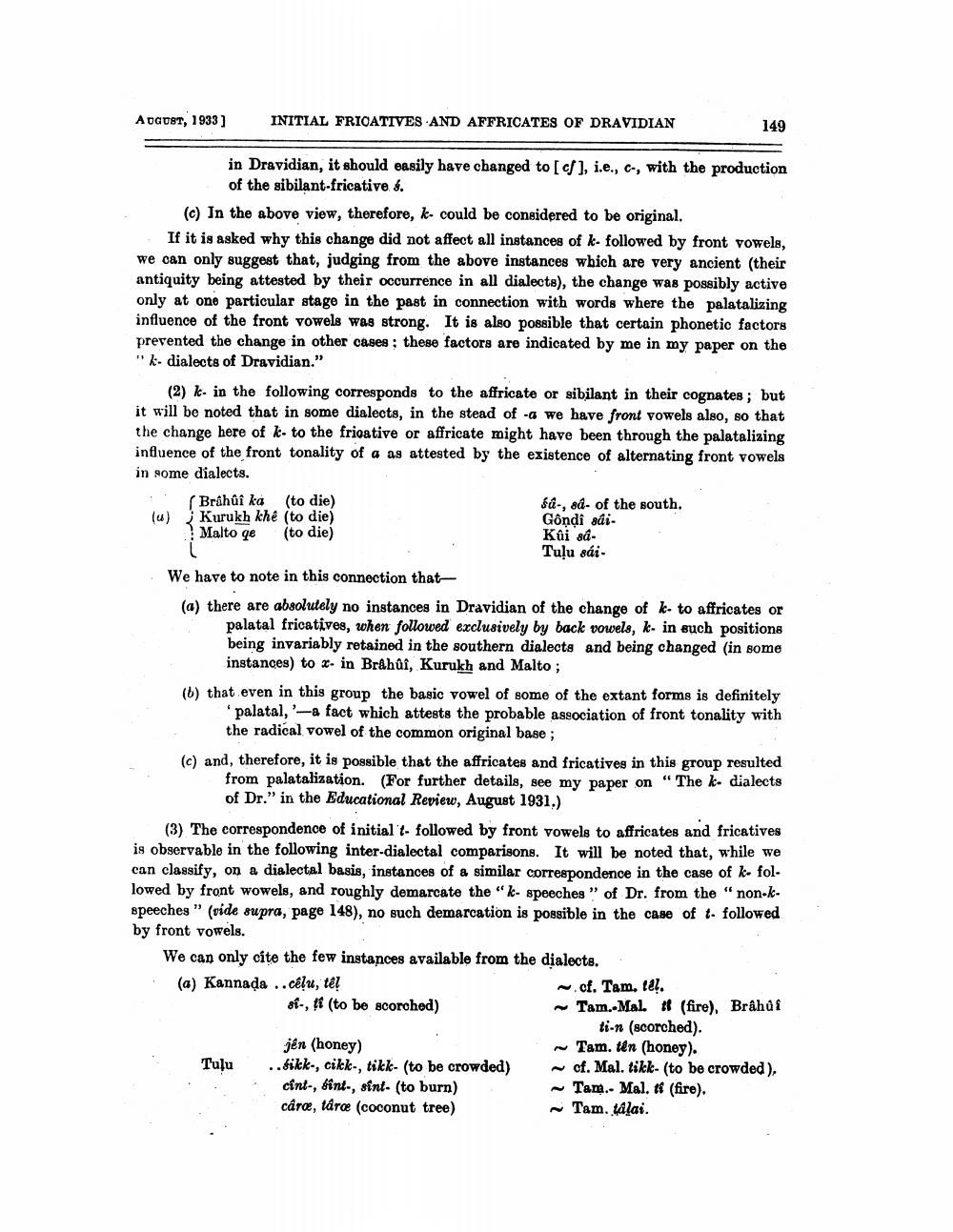________________
August, 1933]
INITIAL FRICATIVES AND AFFRICATES OF DRAVIDIAN
149
in Dravidian, it should easily have changed to [c], i.e., C-, with the production
of the sibilant-fricative s. (C) In the above view, therefore, k. could be considered to be original.
If it is asked why this change did not affect all instances of k- followed by front vowels, we can only suggest that, judging from the above instances which are very ancient (their antiquity being attested by their occurrence in all dialects), the change was possibly active only at one particular stage in the past in connection with words where the palatalizing influence of the front vowels was strong. It is also possible that certain phonetic factors prevented the change in other cases; these factors are indicated by me in my paper on the " k dialects of Dravidian."
(2) k- in the following corresponds to the affricate or sibilant in their cognates; but it will be noted that in some dialects, in the stead of a we have front vowels also, so that the change here of k-to the fricative or affricate might have been through the palatalizing influence of the front tonality of a as attested by the existence of alternating front vowels in some dialects. Brahui ka (to die)
śd-, ed- of the south. (u) Kurukh khé (to die)
| Gòndi Bái. Malto qe (to die)
Kúi sá.
Tulu sái. We have to note in this connection that, (a) there are absolutely no instances in Dravidian of the change of k. to affricates or
palatal fricatives, when followed exclusively by back vowels, k. in such positions being invariably retained in the southern dialects and being changed (in some
instances) to 2. in Brahûî, Kurukh and Malto; (b) that even in this group the basic vowel of some of the extant forms is definitely
palatal, '-a fact which attests the probable association of front tonality with
the radical vowel of the common original base; (c) and, therefore, it is possible that the affricates and fricatives in this group resulted
from palatalization. (For further details, see my paper on "The k- dialects
of Dr." in the Educational Review, August 1931.) (3) The correspondence of initial e followed by front vowels to affricates and fricatives is observable in the following inter-dialectal comparisons. It will be noted that, while we can classify, on a dialectal basis, instances of a similar correspondence in the case of k. fol. lowed by front wowels, and roughly demarcate the "k- speeches ” of Dr. from the "non-kspeeches ” (vide supra, page 148), no such demarcation is possible in the case of t. followed by front vowels.
We can only cite the few instances available from the dialects. (a) Kannada ..ceļu, tēļ
cf. Tam, leļ. of-, ! (to be scorched)
Tam.-Mal # (fire). Brâhùi
ti-n (scorched). jên (honey)
- Tam. An (honey). Tulu ..fikk-, cikk-, tikk- (to be crowded) cf. Mal. tikk- (to be crowded), cint-, fint., sint. (to burn)
- Tam.. Mal. # (fire). caree, tároe (coconut tree)
Tam. tļai.




